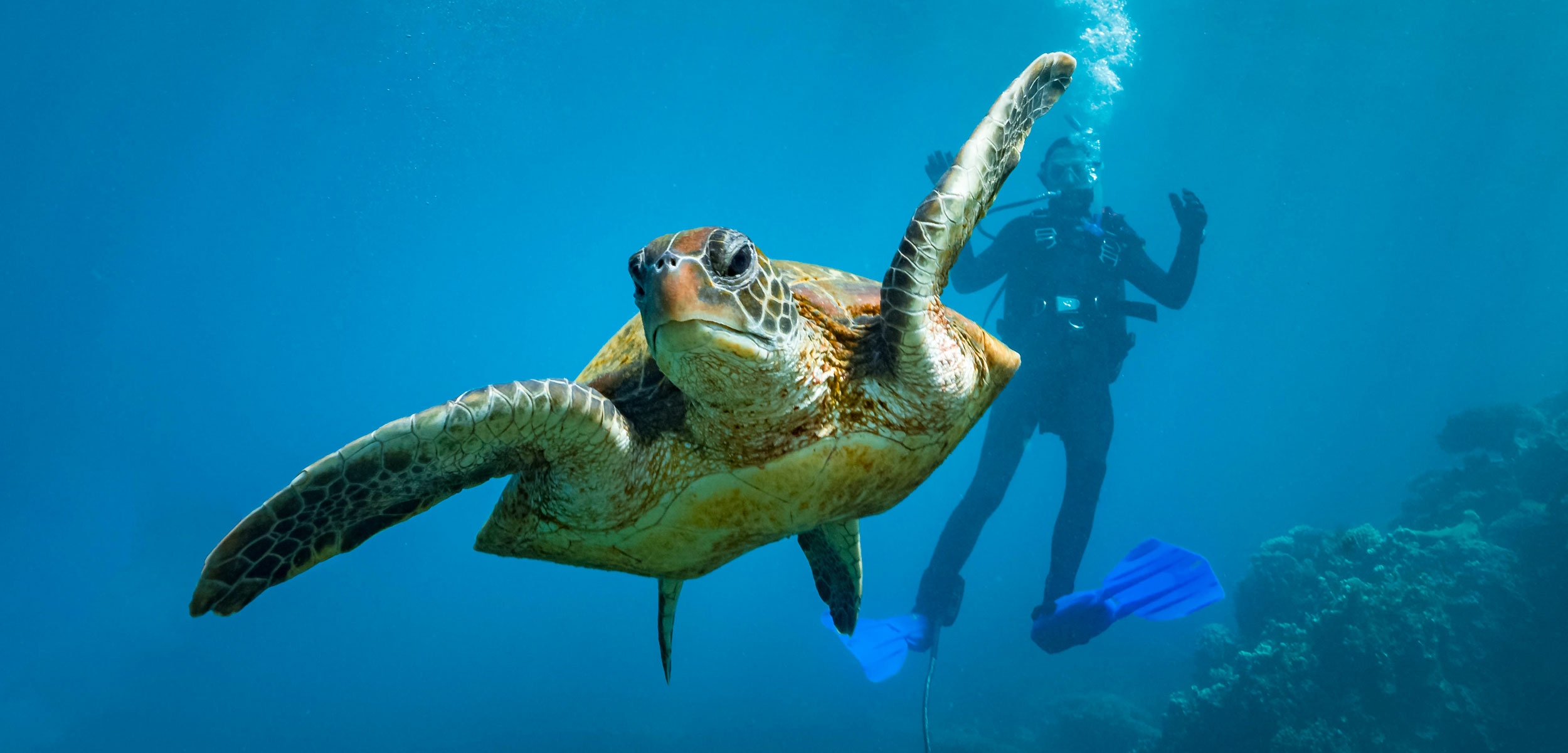In the Push for Marine Conservation, Partially Protected Areas Are a “Red Herring”
Compared to fully safeguarded marine protected areas, partially protected areas have little benefit for marine life or people’s enjoyment.
Article body copy
Inspired by the United Nations Aichi Biodiversity Targets, nations are rallying behind an ambitious pledge to conserve 30 percent of their lands and waters by 2030. However, more than two-thirds of the world’s marine protected areas (MPAs), a primary marine conservation tool, allow some form of fishing. Now, an in-depth study of MPAs along Australia’s southern coast shows that these partially protected reserves are largely ineffective—both for protecting biodiversity, and for improving people’s enjoyment of the protected space. The study, conducted by social ecologist John Turnbull and his colleagues at the University of New South Wales in Australia calls partially protected marine reserves “red herrings” that “create an illusion of protection and consume scarce conservation resources.”
Turnbull set out to address two basic questions about MPAs—one ecological, one social. First, how well do partially protected marine areas safeguard biodiversity? Not well, he found. Second, are the people who use these MPAs, such as divers, snorkelers, and swimmers, getting the actual values and benefits that they expect? They aren’t.
MPAs can offer varying degrees of protection depending on their design. Fully protected areas ban all activities that remove or harm marine life such as fishing and oil and gas exploration. On the other end of the spectrum, some protected areas allow these activities to persist. While international guidelines set by the United Nations suggest that such extractive activities should be prohibited in protected areas, countries including Australia and Canada continue to allow industrial-scale fishing and oil and gas exploration in some MPAs.
To see what kind of value partially protected areas offer, Turnbull and his colleagues compared partially and fully protected MPAs with stretches of unprotected ocean along 7,000 kilometers of coastline in Australia’s Great Southern Reef. They analyzed the ecological health of 56 sites using data gathered through the Reef Life Survey, a citizen science initiative that trains divers to conduct underwater surveys of marine life.
Examining biodiversity and abundance data from 625 surveys, the researchers found no discernible differences between partially protected MPAs and coastal areas with zero protections—no more fish, algae, or invertebrates. By contrast, and in line with previous research, fully protected areas boasted more species and bigger fish than unprotected areas.
Their sociological research into the way people use and value these MPAs, and how well public expectations about marine protection align with reality, yielded more surprises.
There is an impression that marine protected areas don’t have a lot of support from the public, says Turnbull. “We found that over 90 percent of people were supportive of protected areas that restricted fishing activities.” And that level of support for MPAs with restricted fishing was consistent even among people who fish. This strong public support stood out to Graham Edgar, a veteran MPA researcher and former president of Reef Life Survey.
Across the study sites, Turnbull and his colleagues performed nearly 200 observational surveys, noting the number of people in a site and the ways in which they used it—including sunbathing, fishing, snorkeling, boating, and swimming—and conducted more than 400 interviews with a subset of users. They hoped to uncover whether and why people might be attracted to using marine areas with varying levels of protection.
The team also examined how people perceived the quality of marine life, and how much protection they thought that marine life received in different coastal areas. Most people interviewed clearly understood and supported the purpose of fully protected areas. And they showed that they valued these areas in how they used them—fully protected MPAs enjoyed twice the divers and over three times the snorkelers as unprotected coasts.
But a major takeaway for Turnbull was how confused people were about MPAs with only partial protection. They were confused about whether they were in an MPA, and whether it protected marine life. The survey showed that 40 percent of people overestimate the level of protection afforded by a partially protected MPA.
In all, Turnbull and his team concluded that partially protected areas showed no social benefits over unprotected ocean.
However, Sylvaine Giakoumi, a marine ecologist at the University of Queensland in Australia who was not involved with this study, thinks their assessment of MPAs’ social impacts is missing a key part: the socioeconomic effects. She would like to see how the livelihoods of local people might be affected by the type of MPA nearby.
But she agrees that calling partially protected MPAs “protected” is problematic when so much research shows that they hold little value for biodiversity. “It is misleading,” she says, especially as governments use these areas to meet protection targets.
That’s a major sticking point for Turnbull. There’s a great misalignment between public expectations and what partially protected MPAs are delivering, he says. “We felt we had to call that out.”
Still, partially protected areas can have important uses, such as supporting traditional fishing practices or serving as buffers around fully protected reserves, says Giakoumi.
While the study acknowledges as legitimate such uses for creating a protected area, Turnbull emphasizes that those reasons are not about protecting biodiversity. “Let’s not pretend that they’re doing what they’re not, and at the moment, we feel that is what’s going on,” he says.

